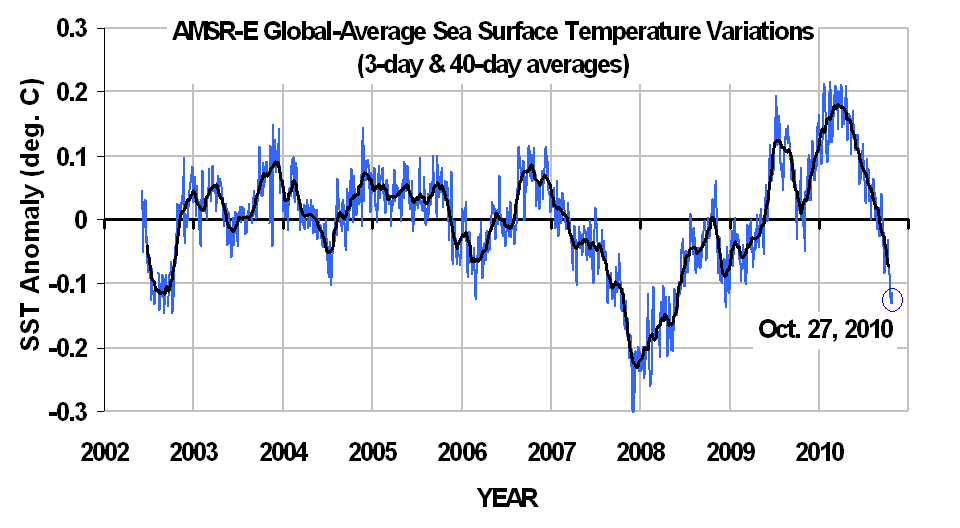Having just returned from another New Orleans meeting – this time, a NASA A-Train satellite constellation symposium — I thought I would check the latest sea surface temperatures from our AMSR-E instrument.
The following image shows data updated through yesterday (October 27). Needless to say, there is no end in sight to the cooling. (Click on image for the full-size version).

Since these SST measurements are mostly unaffected by cloud cover like the traditional infrared measurements are, I consider this to be the most accurate high-time resolution SST record available…albeit only since mid-2002, when the Aqua satellite was launched.
I won’t make any predictions about whether SSTs will go as low as the 2007-08 La Nina event. I’ll leave that to others.
 |

 Home/Blog
Home/Blog




Gratitude for the update. If it continues down this manner, it might be down 5 K by the end of the decade, unless of course it changes track. I’m getting my cardy nevertheless, brrrr.